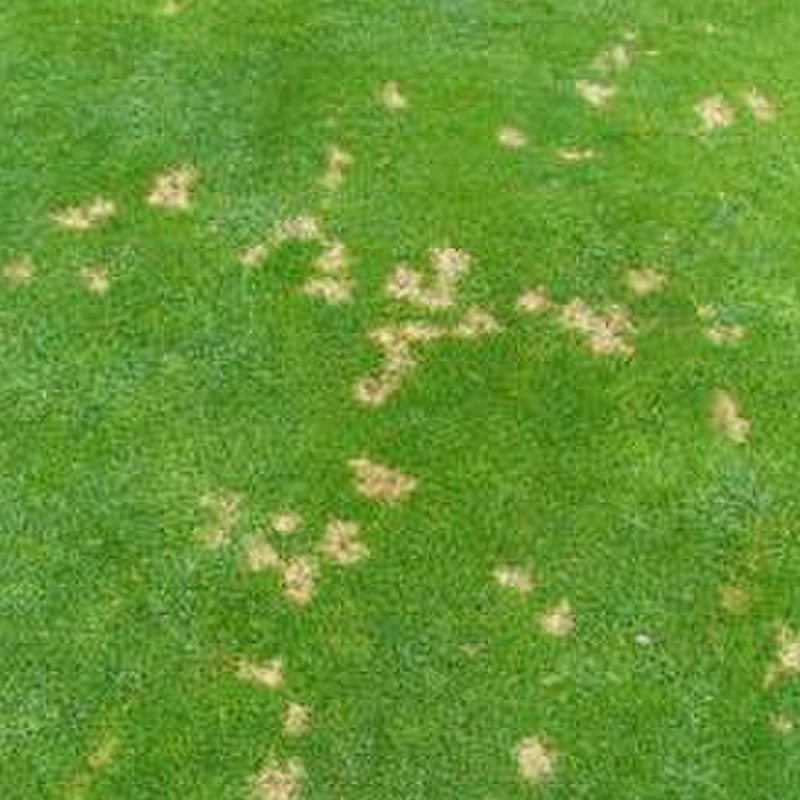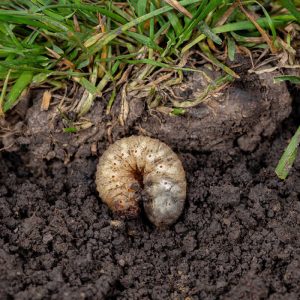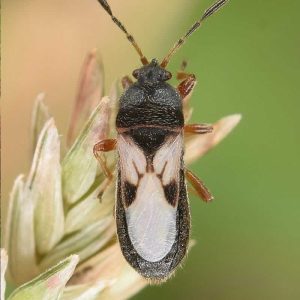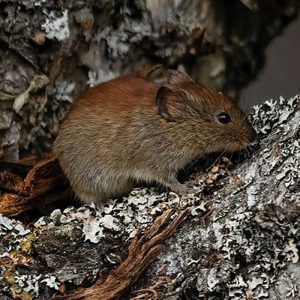
04 Mar Virginia Pests that can take over your lawn
Your lawn is more than just a patch of green—it’s a vibrant ecosystem teeming with life.But some of them are what we’d call, Virginia Pests.
While many insects and pests play beneficial roles in maintaining a healthy lawn, others can wreak havoc if their populations get out of control. Let’s explore some of the most common types of insects that can infest your lawn in Virginia and how to identify and manage them effectively.
 1. Grubs
1. Grubs
Grubs are the larval stage of various beetle species, including Japanese beetles, June bugs, and European chafer beetles. These C-shaped larvae feed on grassroots, causing patches of dead or dying grass to appear in your lawn. Signs of grub infestation include brown patches of turf that can be easily lifted like a loose carpet.
Management: Treat grub infestations with beneficial nematodes, insecticidal soaps, or natural predators like birds and beneficial insects.
 2. Chinch Bugs
2. Chinch Bugs
Chinch bugs are tiny insects that suck sap from grass blades, causing them to turn yellow and die. They prefer hot, dry conditions and are most active during the summer months. Chinch bug damage often appears as irregular patches of dead grass, especially in sunny areas.
Management: Keep your lawn well-watered and properly fertilized to minimize stress on grass plants. In severe cases, insecticidal soap or neem oil can be used to control chinch bug populations.
 3. Armyworms
3. Armyworms
Armyworms are the larvae of certain moth species and are known for their voracious appetite. These caterpillars feed on grass blades, leaving behind irregular patches of chewed or browned turf. Armyworm infestations are most common during the warm summer months.
Management: Monitor your lawn regularly for signs of armyworm activity, such as chewed grass blades or clusters of larvae. Hand-picking can be effective for small infestations, while natural predators like birds and parasitic wasps can help keep populations in check.
 4. Fire Ants
4. Fire Ants
While ants themselves may not directly damage your lawn, their underground tunnels can disrupt grass roots and create unsightly mounds on the surface. Some ant species, such as fire ants, can also deliver painful stings to humans and pets. It’s critical to analyze the benefit versus cost to have them in your yard. An ant mound on the exterior perimeter might be good to leave on the property because ants do eat other insects and plant refuse that can harm your lawn. However, mounds located where you spend the majority of your time are important to remove to reduce injury to children who play on the lawn.
Did you know that fire ants aren’t native to Virginia. Learn more on their migration here.
Management: Control ant populations by eliminating food sources and sealing entry points into your home. Baits, insecticidal dusts, or natural predators like nematodes can be used to treat ant nests in the lawn.
 5. Moles and Voles
5. Moles and Voles
Although not insects, moles and voles are common pests that can wreak havoc on lawns by tunneling underground and feeding on plant roots. Mole tunnels often appear as raised ridges or mounds of soil, while vole damage may include chewed grass roots and stems.
Management: Control mole and vole populations by eliminating their food sources, such as grubs and other insects. Physical barriers, traps, and repellents can also help deter these pests from your lawn. For more information, please visit this help page on ridding your property of moles and voles.
Maintaining a healthy lawn involves being vigilant against potential insect pests and taking proactive measures to prevent infestations. By familiarizing yourself with the signs and symptoms of common lawn insects and implementing appropriate management strategies, you can keep your lawn looking lush and vibrant year-round.
Remember, a healthy lawn is the best defense against pest infestations, so be sure to provide proper care and maintenance to promote strong, resilient turf.
Image Attribution: Chinch Bug, Armyworm, Fire Ants, Vole


